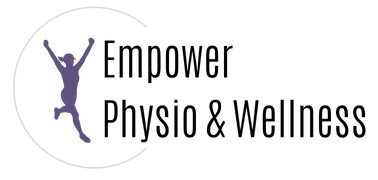Ever wondered if there’s a way to get stronger without spending hours lifting weights? Or maybe you want to build muscle, but joint pain gets in the way of doing the exercises you know can help. If you’re looking for a hack to save time and increase strength without aggravating underlying injuries, I’m excited to tell you about blood flow restriction (BFR) training. This new(ish) technique can help you build excellent muscle strength and reduce joint pain without lifting super heavy weights.
Blood flow restriction training overview
Blood flow restriction training is a technique where a tourniquet (similar to a blood pressure cuff) is placed around the top of a limb to limit blood flow. This deprives muscles of oxygen and forces them to produce energy. Without oxygen, muscles fatigue much more quickly, meaning they don’t have to work all that hard before they burn out. This simulates an environment where you did a super heavy lift without actually having to put in all the effort. In addition to positively affecting the muscles directly targeted by blood flow restriction, BFR training also has positive effects on the whole body. Seems too good to be true, right? Yeah, I thought so too but it’s actually one of the most highly researched methods used in physical therapy.
Blood flow restriction training benefits
Almost anyone can benefit from this modality and it can help with:
- Joint pain and osteoarthritis. Sometimes joints can become painful or develop osteoarthritis associated with weakness of the muscles around that joint. For example, knee pain and arthritis are linked to weakness of the quads and hamstrings. The challenge is, strengthening the quad with squats and lunges can aggravate knee pain. When you use BFR training, you can do easier moves like leg raises and leg kicks that don’t cause knee pain to flare up while building much more muscle strength and size than if you did those moves without this technique.
- Post-operative rehab. After surgery, it’s very common for muscles to atrophy. This is because of the trauma of surgery, as well as the rest required as the body heals. This is especially true when it comes to knee surgeries and quad strength. Research shows that adding BFR training early in post-operative recovery reduces and prevents muscle atrophy while allowing for increased muscle strength and size throughout recovery.
- Bone injury, stress fractures, and osteopenia/osteoporosis. Current recommendations for building bone density include high-impact activity and weight lifting, however, this may not be safe for some people with bone injuries. BFR training can be a great alternative because it allows a person to maintain and build muscle strength in a way that will not interfere with bone healing since most people with stress fractures need to limit or eliminate weight-bearing activities.
- Recent muscle strains. If you’ve ever had a muscle strain, you know that they can be extremely painful and take time to heal. Performing BFR training within days of a muscle strain and doing it frequently can help the muscle heal much more quickly than if you just rested. This is because it stimulates the release of growth hormone (GH) and insulin growth factor (IGF-1), both of which aid in muscle repair, recovery, and regeneration by promoting collagen production. The key is to implement BFR training soon after the initial injury, so be sure to act quickly to get the maximum benefit!
- Tendinopathy. I talked in a previous blog post about tendinopathy, why it happens, and how to heal this type of injury. Tendinopathy can be a pretty tricky condition to heal, but it can be done! Research is showing that BFR training can help. Remember, tendons love to work at just the right amount–not too much or too little. It’s this loading of the muscle and tendon that allows the tendon to heal. BFR training can be a great thing to add early in tendon injuries to promote healing through the release of growth hormone. It also lets the muscle and tendon have the same stimulus of working hard in a way that is less painful and aggravating. Once the tendon is less irritated, you can progress to higher-level strength exercises for full tendon recovery.
- Age-related muscle loss. As we get older, it’s harder to build and maintain muscle mass and strength. This becomes a huge problem as people age and get less active. Being sedentary makes you lose muscle even more quickly. In this scenario, it is hard to tolerate the high-intensity strength training required to build significant muscle size and strength. Insert BFR training and you’re able to build great muscle size and strength while doing easier exercises.
- Improving cardiovascular fitness. BFR training can be used while performing aerobic exercises like walking and biking. There are two pretty cool results you get from this. First, BFR training has been shown to improve VO2Max, which is a measure of how efficiently oxygen is transported in the body and used by muscles during exercise. Whether you aren’t in great shape or are a highly trained athlete, BFR training with aerobic training can improve your VO2Max. Second, BFR training used while walking has been shown to improve the strength of the quads and hamstrings. Walking alone does not improve muscle strength and size, so this is a pretty notable finding.
Blood flow restriction training frequency
BFR training follows the same recommendations as regular strength training 2-3x/week. Less working time is required for BFR training with both resistance exercise and aerobic training than if you did those activities without it. Immediately following surgery or an injury, it can be performed daily at lower intensities.
Does blood flow restriction training sound like a fit for you? Contact us and we can talk about how to incorporate it into a customized treatment plan.



